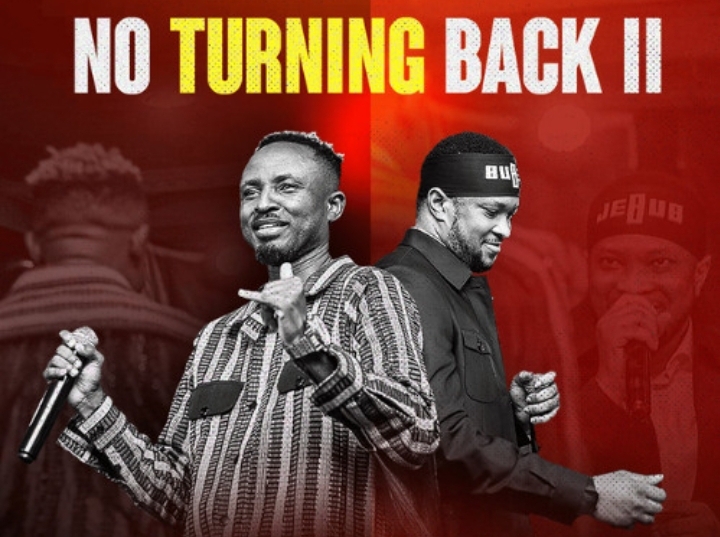Prominent Nigerian evangelist and Christian filmmaker, Mike Bamiloye, has spoken out in defense of the gospel hit No Turning Back, a collaborative track by Gaise Baba and Lawrence Oyor that has recently sparked mixed reactions within the Christian community.
In an impassioned social media message shared on Sunday, the founder of Mount Zion Faith Ministries encouraged fellow believers to move past superficial concerns about the artists’ physical appearance and instead reflect on the spiritual depth and impact of the song’s message.
READ ALSO: Gaise Baba’s controversial song, ‘No Turning Back II’ becomes highest-charting gospel hit in Nigeria
The song blends Yoruba musical elements with themes of redemption and spiritual renewal, and has found widespread appeal—especially among younger audiences. With over four million streams across digital platforms, the anthem has lyrics like “Ife Jesu lo wa mi ri, to gbami ku o” (“The love of Jesus sought me, found me, and died for me”), which listeners have celebrated for conveying the gospel in a culturally resonant and emotionally compelling way.
Despite its widespread acceptance, Never Going Back has drawn criticism from certain conservative quarters.

Detractors have fixated on Gaise Baba’s brightly colored hairstyle, Lawrence Oyor’s use of a headband, and the energetic choreography featured in the music video—elements some have dismissed as too “worldly.”
Bamiloye, however, firmly disagreed with these criticisms, asserting that the focus should remain on the powerful gospel message embedded within the song rather than its unconventional delivery.
He cautioned that discrediting such creative gospel expressions might alienate the very youth the Church seeks to reach, potentially pushing them further towards secular influences.
He wrote, “No Turning Back – A Soundtrack for This Generation… So No Turning Back by Gaise Baba and Lawrence Oyor, hit the internet and it went viral, young people love it, but recently, I have been seeing videos of a pastor and some Christians criticizing the song and I can’t stop thinking about the message of the song and the reactions it has sparked amongst us Christians.”
“Here’s the thing: teenagers and young adults today are some of the most difficult people to reach with the gospel… we finally get a song that boldly centres Jesus and personal transformation, that our youths are vibing too and some of us are criticizing it? What is wrong with us? Let’s take a step back.”
He continued by highlighting the disconnect between traditional expectations and the creative ways in which today’s youth are experiencing and expressing faith.
Bamiloye pointed out the irony of emphasizing external appearances over the profound spiritual truths in the lyrics, saying: “The lyrics say: ‘Ife Jesu lo wa mi ri, to gbami ku o’—‘The love of Jesus sought me, found me, and died for me.’ That’s the gospel, in Yoruba rhythm and sound! Yet all some people can talk about is Gaise’s hair color, his blinks, the headband on Lawrence’s head and the dance steps in the song. Really?”
He concluded by urging Christians to adopt a more supportive attitude toward youth-centered gospel efforts, emphasizing the importance of spiritual substance over surface-level judgments.
“So rather than criticise, let’s pray. Let’s encourage. Let’s support gospel expressions that speak to this generation in their own rhythm. Haba!! some of us are still ‘saving the ark’ and we are not even aware of it. May God help us all.”

